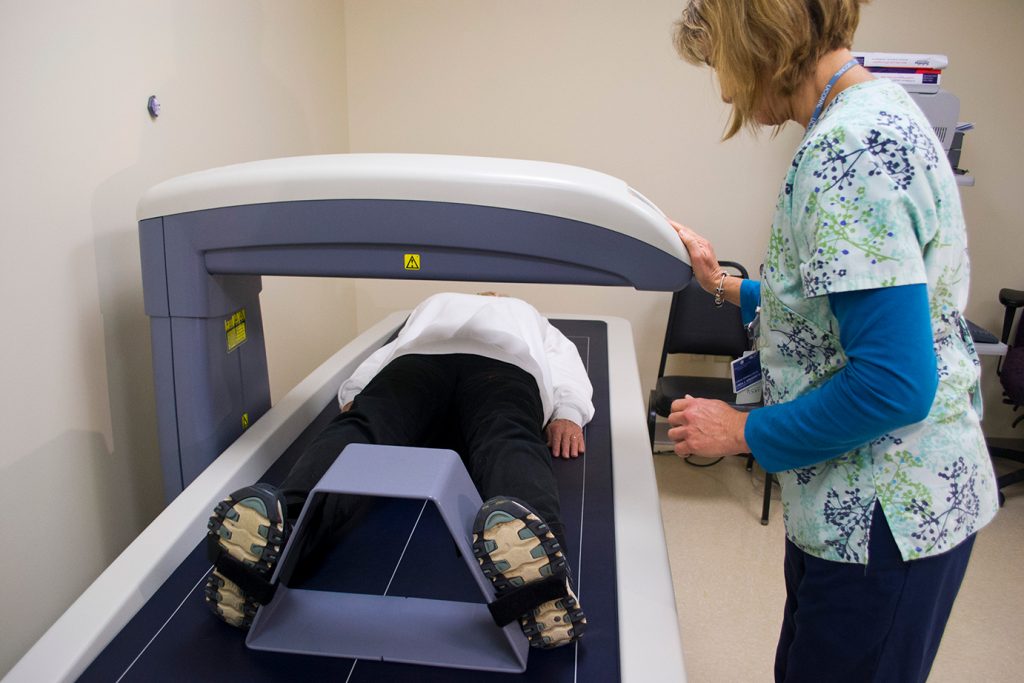What Is a Bone Density Scan?
Bone density testing is critical for the early diagnosis of osteoporosis and osteopenia, conditions of diminished bone tissue.
At UConn Health, we use a radiological test called a DXA (Dual Energy X-ray Absorption), the “gold standard” for bone density testing. The test calculates the density of your bones and creates a chart that compares your density to what the density should be. The higher the density, the strength of your bones. It is a type of low-dose X-ray test that measures the amount of calcium and other minerals in your bones and shows the strength and thickness (known as bone density or mass) of your bones.
We use a Trabecular Bone Score (TBS) to analyze your DXA images. TBS is a number that reflects the quality and structure of your bone tissue. It can help us predict your fracture risk better than DXA alone. We also perform vertebral fracture analysis to look for spine deformities.
Since UConn Health is a major university hospital, our physicians are involved in research on the treatment and prevention of osteoporosis. We maintain “research-quality” testing standards to ensure our patients receive the most accurate test results possible.
Call today to schedule a bone density test at 860-679-3120.

